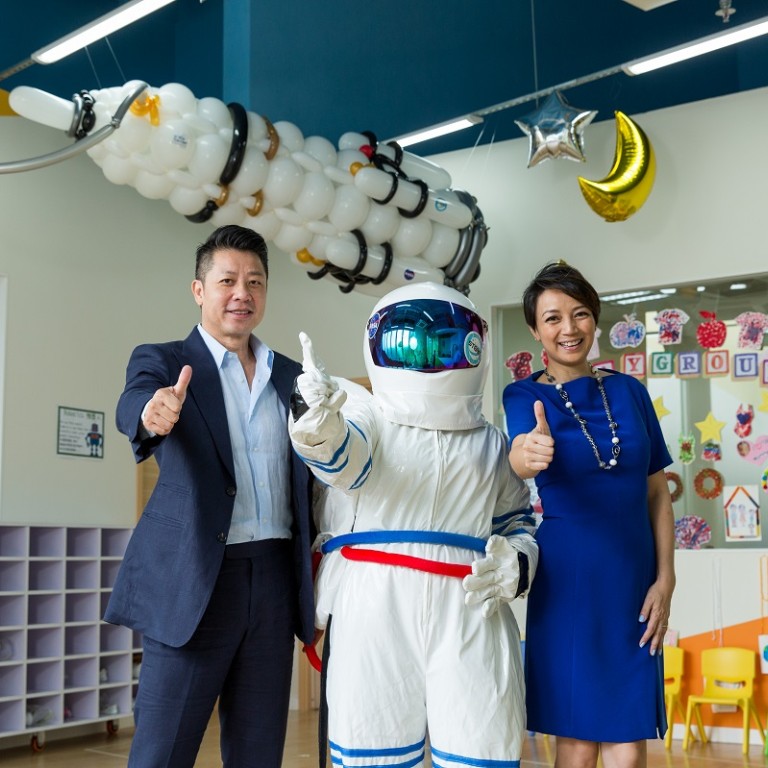
Steam rising
[Sponsored article] Eager to explore, invent and with a tendency to ask an endless array of questions, kindergarten children are at the perfect age to learn about science, technology, engineering arts and mathematics, a concept now commonly referred to as STEAM.
[Sponsored article] Eager to explore, invent and with a tendency to ask an endless array of questions, kindergarten children are at the perfect age to learn about science, technology, engineering arts and mathematics, a concept now commonly referred to as STEAM. Winnie Young, head of school at STEAM International Kindergarten (STEAM-IS) believes integrating into the well-known STEM curriculum encourages children to think creatively and critically. "Even four-year olds, given the opportunity, learn how to solve problems with a positive and inquiring attitude, which are essential skills for their lifelong learning and whole-person development," she says.
As a pioneering school, STEAM-IS is the only kindergarten in Hong Kong to have an arrangement with NASA (National Aeronautics and Space Administration)."Students interact and conduct projects directed by NASA scientists to encourage creativity and nurture critical thinking," says Young. STEAM-IS also incorporates PSHE (Physical, Social, Health and Emotional) and the US Common Core State Standards curricula.
The concept of integrating art with science, technology, engineering and math is gaining momentum, particularly in the US where STEAM subjects are recognised as necessary to be able to thrive in the 21st century. In Hong Kong, however, parents are still largely unaware of the benefits STEAM can provide for their children.

For instance, concerns have been raised both in Hong Kong and internationally, about the lack of females studying mathematics and science at the senior secondary and university levels. Young believes that introducing STEAM education at an early age can help narrow the gap. "Art really gets girls excited about maths and science," she says. "Making the connection helps pique their curiousity on the subjects and gives them a better understanding.”
Young stresses that STEAM learning is not all about educating children to become engineers or scientists. "STEAM provides a framework that inspires students’ imaginations," she says. “For example, by tapping into their natural curiosity to investigate instead of subjecting them to passive instruction, they build a passion and sense of purpose for what they are doing that serves them well throughout their school years, and later in life.”
STEAM-IS was established as a result of parents’ requests for a school where children could have fun while learning effectively. . Young, who has been involved with education for more than 10 years, previously ran a learning centre. "Of course, numeracy, literacy and language development are a key focus, but these topics are taught in a way that children can relate to in daily life," she explains.
Personalised learning, for instance, is a key focus at STEAM-IS. With a capacity for about 300 students, class sizes are purposely kept to no more than 15 children, who are co-taught in half-day sessions in both English and Mandarin. Meanwhile, close contact with parents is another priority. "We want to fully understand parent's aims and expectations for their children and we are there to support and guide them to ensure their children realise their potential," Young says.
Children that graduate from STEAM-IS fit in seamlessly at any international primary school. And if they attend a local school, they often find themselves to be amongst the most inquisitive students in their classes.

Young believes that having inspirational teachers is important regardless of curriculum. "Our teachers are passionate about teaching STEAM," she says. "Our teachers are proud and enthusiastic about continually upgrading their skills and knowledge."
To ensure graduates are able to continue with their STEAM studies once they progress to primary and secondary school, STEAM-IS' educational arm, the STEAM International Academy, provides co-curricular learning opportunities at convenient times, including weekends. Recently, the Academy provided NASA distance learning programmes to 170 Victoria Shanghai Academy students. "Our goal is to instill a love of learning and discovery that will stay with students through their school and university studies and beyond," says Young.
STEAM-IS academy specialist Simon Wong explains the location for the school in To Kwa Wan was strategically chosen for its close proximity to a playground and a park where, where classroom lessons can be taken outdoors. "Our students have the opportunity to play and learn in a supervised, safe and secure outdoor setting," he says. “STEAM-IS believes that play forms an indispensible part of childhood learning. Research shows that children who have the opportunity to play tend to be happy children, and happy children do better in their studies." Fiona Wong, mother of K3 student Kayden, says that because her son began his education journey learning in a STEAM context, he has developed a positive learning attitude. "He is curious, imaginative, and the school provides these wonderful elements that let him explore," she says.
Sharing a similar view, Katy, whose son Louis is a K1 student, says that unlike traditional school systems, STEAM-IS's curriculum, activities and environment allow her son to his imagination and think freely. Meanwhile, Christine, who has a child in K1 and the pre-K classes, appreciates the school’s approach to personalised learning.
"The small class size allows the teachers to become familiar with the characteristics of each child and unearth their potential," Christine says. "Importantly, my children enjoy going to school and love learning new things every day in a fun way."

Address: G/Floor 9 Yuk Yat Street, The Bayview, To Kwa Wan
Phone: 3615 8701
